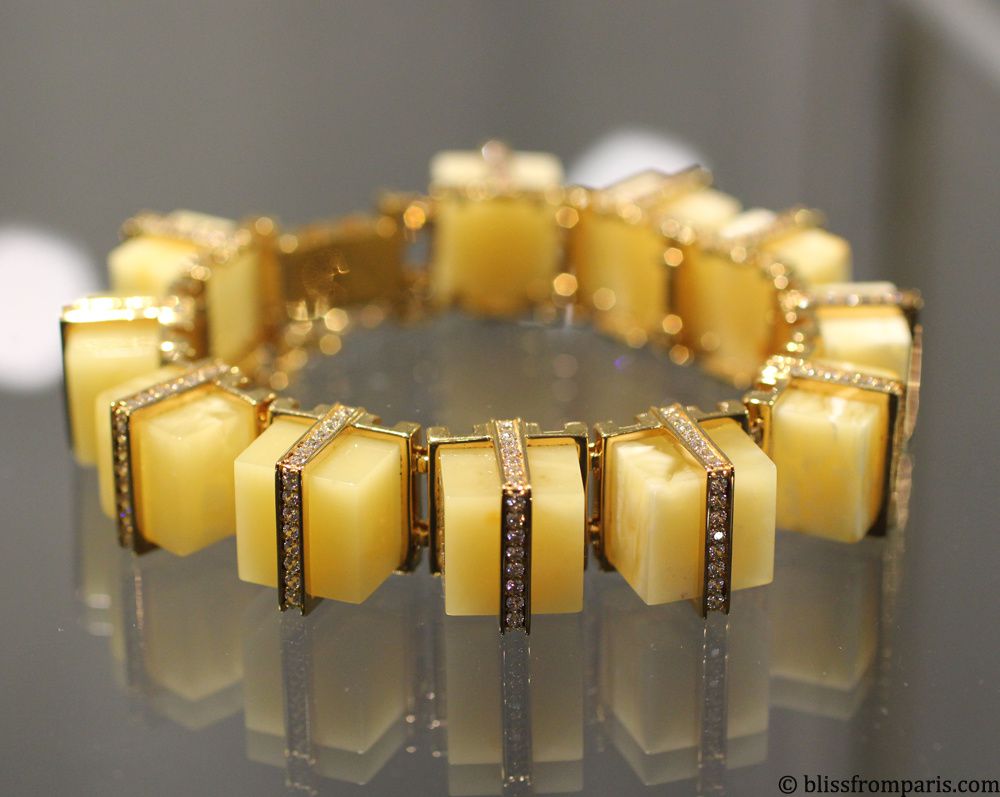Amber was born between 40 and 15 million years ago after abundant coniferous sap flows located in Northern Europe and Central Europe. It fossilized through millions of years that followed, transported by rivers and accumulated in the Baltic seabed.

Its fascination has far exceeded the Baltic coasts. Since the Bronze Age, the Amber Road has connected the Baltic Sea to the Mediterranean Sea following the rivers Vistula, Elbe and Danube. Amber was formerly called Gold of the North. Floating on salt water, it is caught and harvested on the beaches of the Baltic Sea (Germany, Denmark, Sweden, Finland, Estonia, Latvia, Lithuania, Poland, Russia and Ukraine). It is also found in southern Mexico and the Dominican Republic. But the most important amber resource, that is 90% of world production, is in mines around Kaliningrad, a city of a landlocked Russia between Poland and Lithuania.

The colors of amber varies from yellow to brown, through red, whitish shades, and sometimes green and blue. It is more or less translucent. The quality of amber is evaluated according to its succinic acid content. The Baltic amber is the one that contains the most, hence its preciousness. Its value can increase if it has inclusions.

Finnaly I offer a selection of jewelry where the stylization of amber is revisited in a more modern version. In contrast with the blue titanium at Studio Rox, silver inoxydé by Agata Calka or white pearls at Galeria Dubiel, amber is enhanced and becomes a young accessory. For a more luxury version, no more hesitation to mix with the yellow gold and precious stones. With a little more daring, carved amber is heated or burned to play on its color and texture. Amber continues to be an inexhaustible resource of creativity.










